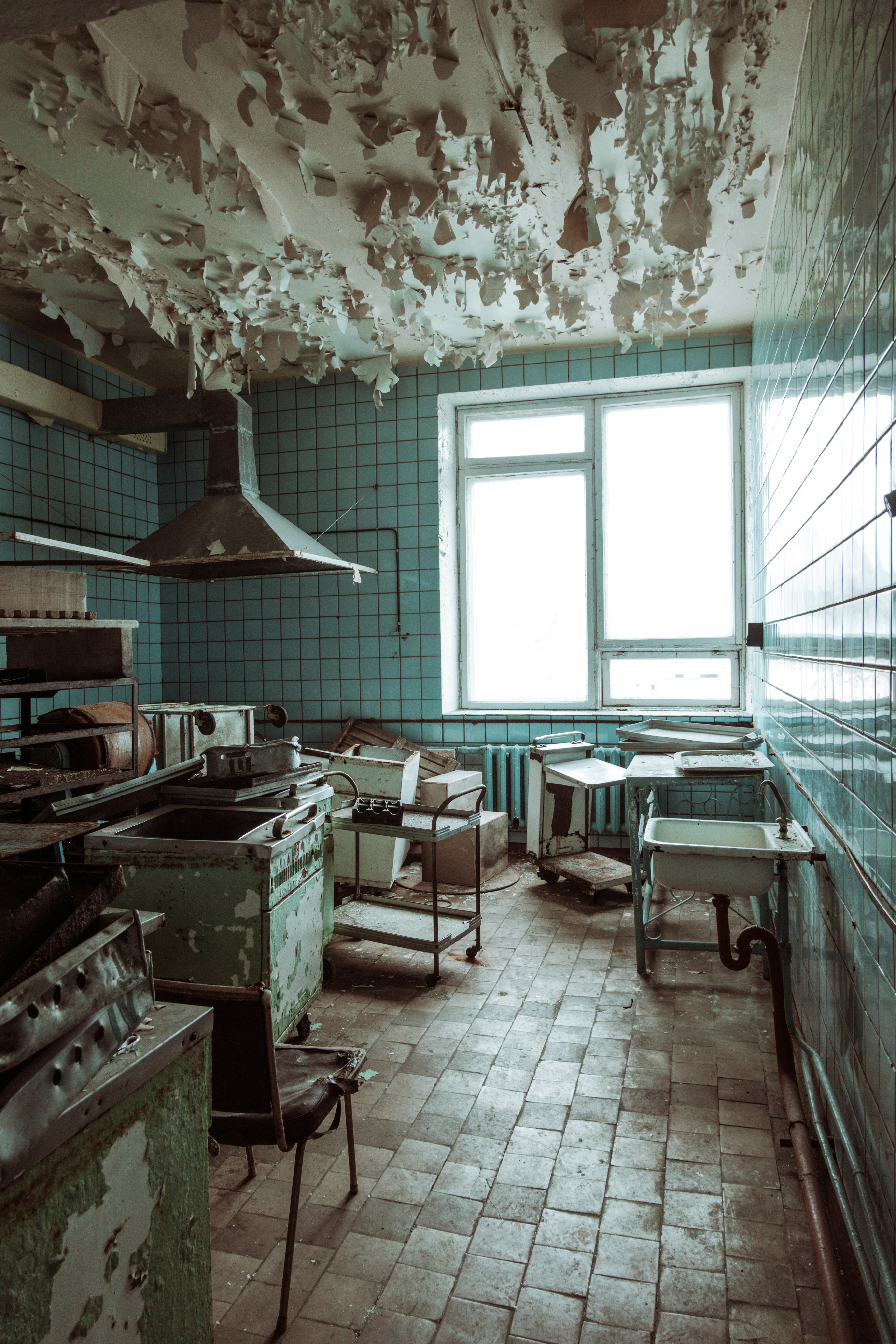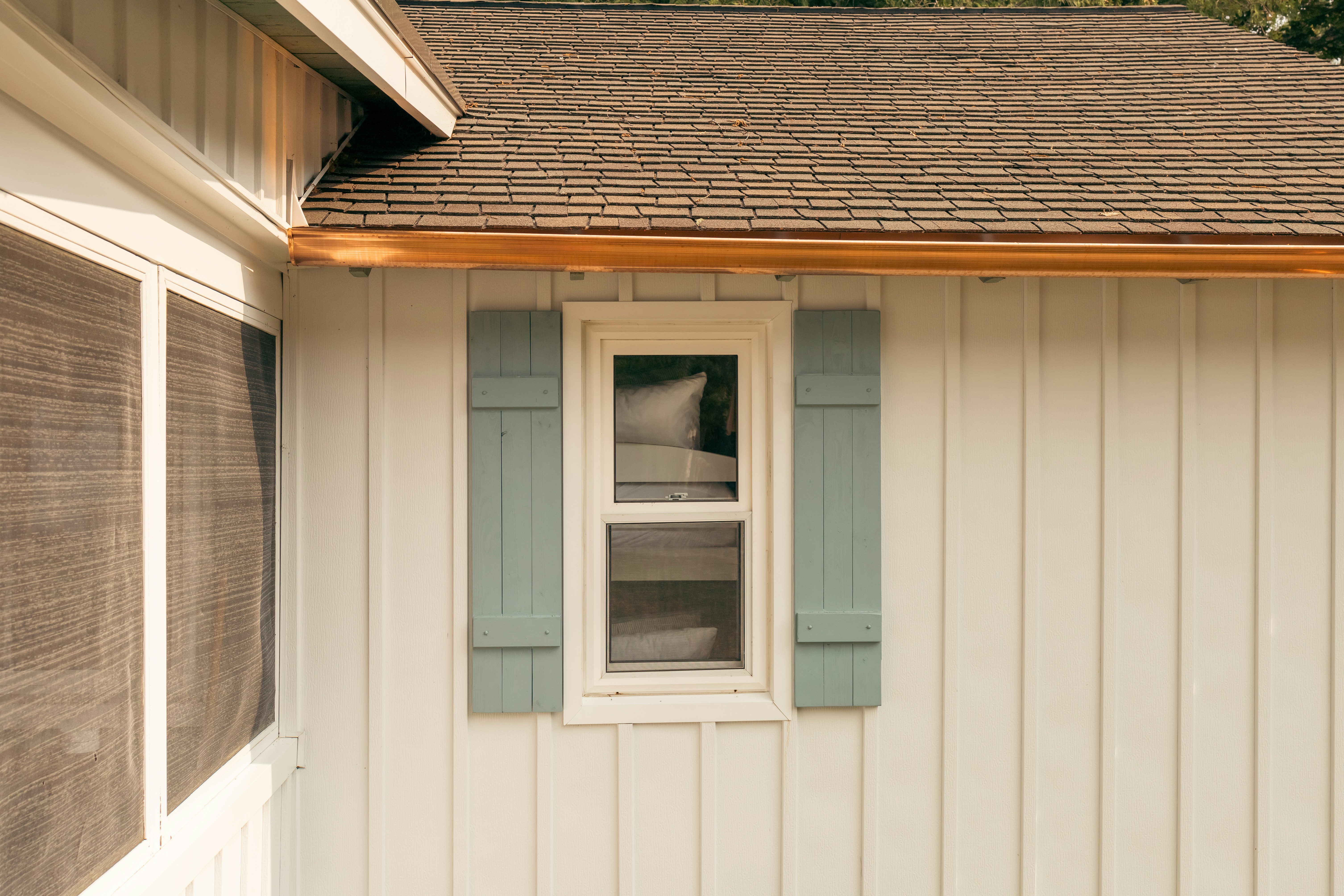Understanding Rot

Definition and Causes of Rot
Rot is a natural process of decay that affects wood and other organic materials due to the growth of fungi. It occurs when wood is exposed to moisture for extended periods, creating an environment conducive to fungal growth.
The primary cause of rot is excess moisture, which can result from leaking roofs, plumbing issues, poor ventilation, or inadequate waterproofing. When wood becomes wet and remains damp, fungi spores germinate on its surface, breaking down its cellulose and hemicellulose components.
Moreover, temperature plays a crucial role in the development of rot. Fungi thrive in temperatures between 60°F and 90°F (15°C to 32°C), making these conditions ideal for rot growth.
Additionally, high humidity levels further exacerbate the problem by creating a moist environment that accelerates fungal activity. Understanding the causes of rot is essential for effective prevention and timely intervention to preserve the structural integrity of buildings.
Different Types of Rot (Dry Rot, Wet Rot, Brown Rot)
There are various types of rot that can affect wood structures in Kirkland homes. Dry rot, also known as Serpula lacrymans, is a particularly destructive form of decay caused by a specific type of fungus.
Dry rot thrives in poorly ventilated areas with high moisture content and has a distinctive musty odor. It can spread rapidly through timber structures, leading to severe structural damage if left unchecked.
Wet rot is another common type of decay caused by different species of fungi than dry rot. Unlike dry rot which requires less moisture to thrive, wet rot typically occurs in areas with persistent water exposure such as leaking pipes or poorly sealed windows.
Wet rot tends to be localized around the source of moisture but can still compromise the integrity of affected wood if not addressed promptly. Brown rot, also known as Coniophora puteana or "cellar fungus," is characterized by its ability to break down cellulose components while leaving behind darker-colored residual lignin strands.
This type of decay often results in cracked or shrunken wood with a brownish hue. Brown rot typically thrives in damp environments with limited airflow and can cause significant damage if left untreated.

Signs of Rot Damage
Visual Indicators: Unveiling the Telltale Signs
When it comes to identifying rot damage in structures, visual indicators play a crucial role in early detection. One common sign is discoloration on wooden surfaces, where the wood may appear darker or have a stained appearance.
This discoloration often signifies moisture infiltration and decay within the wood fibers. Another key visual cue is the presence of soft spots when pressing on wooden surfaces.
Rotted wood tends to lose its structural integrity, resulting in areas that feel spongy or easily give way under pressure. By carefully inspecting for these visual cues, homeowners can pinpoint potential rot issues before they escalate into major structural problems.

Musty Odor and Mold Growth: Unveiling Nature's Clues
Beyond what meets the eye, another sign of rot damage is the distinct musty odor that permeates spaces affected by decay. This unpleasant smell is a result of microbial activity breaking down organic matter within the wood and releasing volatile compounds into the air.
Additionally, mold growth often accompanies rot damage, appearing as fuzzy patches in various colors like green, black, or white on affected surfaces. Mold thrives in damp environments created by moisture buildup from rotting wood, posing not only aesthetic concerns but also potential health risks for occupants.
Recognizing these olfactory and visual clues is essential for prompt intervention to mitigate further damage. Being attuned to both visible signs and odorous hints of rot damage is paramount for preserving the structural integrity and indoor air quality of buildings in Kirkland.
Homeowners should remain vigilant for discoloration and soft spots on wooden surfaces as well as pay attention to musty odors and mold growth within their living spaces. By promptly addressing these signs through professional assessment and repair services, individuals can safeguard their homes from the detrimental effects of rot while ensuring a safe and healthy living environment for themselves and their families.
Impact of Rot on Structures

Structural Integrity Compromise
Rot can have a detrimental impact on the structural integrity of buildings and other wooden structures. When wood is compromised by rot, it loses its strength and stability, leading to potential collapse or failure of the affected area. This can pose serious safety risks to occupants of the building as well as neighboring properties.
In cases where rot goes undetected or untreated for a prolonged period, it can spread to other parts of the structure, exacerbating the damage and increasing repair costs significantly. Moreover, structural components such as beams, joists, and support columns are crucial for maintaining the stability of a building.
When these elements are affected by rot, they may no longer be able to bear their intended loads properly, resulting in sagging floors, leaning walls, or even complete structural failure in severe cases. Addressing rot-induced structural damage promptly is essential to ensure the safety and longevity of the building.
Health Hazards Associated with Mold Growth
In addition to compromising structural integrity, rot often leads to mold growth in damp or humid environments. Mold thrives on moisture-rich surfaces such as rotted wood and can quickly spread throughout a property if left unchecked.
Exposure to mold spores can trigger allergies, respiratory issues, and other health problems in individuals living or working in affected spaces. People with asthma or weakened immune systems are particularly vulnerable to the negative health effects of mold exposure.
Furthermore, certain types of mold produce mycotoxins that can be harmful when inhaled or ingested over time. Prolonged exposure to these toxins has been linked to a range of health issues including chronic respiratory conditions, skin irritation, headaches, and fatigue.
Therefore, it is imperative to address both rot and mold growth promptly through professional remediation services to safeguard the health and well-being of occupants within a structure.

Inspection and Assessment by Professionals
When it comes to addressing rot in structures in Kirkland, the first crucial step is to have a thorough inspection and assessment conducted by experienced professionals. This process involves a detailed examination of the affected areas to determine the extent of damage caused by rot.
Professionals skilled in rot repair will carefully inspect all vulnerable areas of the structure, including walls, floors, ceilings, and support beams. Identifying Extent of Damage: During the inspection phase, professionals will meticulously assess the visible signs of rot damage, such as discoloration, soft spots, or crumbling wood.
They will also use specialized tools to probe potentially affected areas to accurately gauge the scope of deterioration. By identifying all areas compromised by rot, professionals can develop a comprehensive repair plan tailored to address each specific issue.
Determining Underlying Causes
In addition to assessing the visible damage caused by rot, professionals will also investigate and determine the underlying causes that led to the deterioration of wood structures. Common culprits for rot include water leaks, high humidity levels, poor ventilation, or direct contact with moisture-prone surfaces. By pinpointing these root causes, professionals can recommend effective solutions to prevent future instances of rot and ensure long-lasting structural integrity.

Removal of Affected Materials
Cutting Out Rotted Sections: Once the extent of damage has been assessed and underlying causes identified, the next step in the rot repair process is removing affected materials from the structure. This typically involves cutting out rotted sections of wood using precise techniques to prevent further spread of decay.
By carefully extracting damaged components and clearing out deteriorated sections, professionals create a clean slate for repairing and restoring integrity to the structure. Treating Remaining Wood for Prevention: After removing rotted sections from the structure in Kirkland homes or buildings undergoing repair work due to rot damage; remaining wood must be treated for prevention purposes against future instances of decay.
Professionals may apply fungicides or sealants on unaffected wood surfaces to create a protective barrier against moisture infiltration and fungal growth. Taking proactive measures like treating remaining wood helps fortify structures against potential risks posed by environmental factors that contribute to rot development.
Best Practices for Preventing Rot in Kirkland Homes

Maintenance Tips for Homeowners to Prevent Future Occurrences
Proactive maintenance is key in preventing rot damage in Kirkland homes. Regular inspections of the property should be conducted to detect any signs of moisture intrusion or potential decay.
Homeowners should pay close attention to areas prone to water exposure, such as around windows, doors, and roofs. Ensuring that these areas are properly sealed can help prevent water from seeping into the structure and causing rot.
Additionally, keeping gutters clean and free of debris can prevent water from overflowing and seeping into the walls or foundation. In addition to regular inspections, homeowners should also address any issues promptly to prevent them from escalating into larger problems.
Any signs of water damage, such as discoloration or soft spots on surfaces, should be investigated and repaired immediately. Timely maintenance tasks such as replacing damaged caulking or weatherstripping can help maintain the integrity of the building envelope and prevent moisture infiltration that leads to rot.
Tips on Improving Ventilation and Drainage Around the Property
Proper ventilation is crucial in preventing moisture buildup that can lead to rot in Kirkland homes. Ensuring adequate airflow throughout the property helps regulate humidity levels and prevents condensation from forming on surfaces. Homeowners can improve ventilation by installing vents in high-moisture areas such as bathrooms, kitchens, and attics.
In addition, using exhaust fans when cooking or showering can help remove excess humidity from indoor spaces. Effective drainage systems are essential for diverting rainwater away from the foundation of a home and preventing water accumulation that can lead to rot.
Gutters should be properly installed and maintained to channel rainwater away from the house. Downspouts should extend at least 5 feet away from the foundation to ensure proper drainage.
Installing French drains or grading the landscape away from the house can also help prevent water pooling near the structure. Remember that prevention is always more cost-effective than repair when it comes to addressing rot issues in Kirkland homes.

Professional Services for Rot Repair in Kirkland
Listing Reputable Companies Specializing in Rot Repair Services
When it comes to addressing rot issues in Kirkland, it is crucial to enlist the expertise of reputable companies that specialize in rot repair services. Some noteworthy firms renowned for their commitment to excellence and quality workmanship include Kirkland Rot Repair Experts, Timber Tech Restoration, and Evergreen Building Solutions.
These companies have established themselves as industry leaders known for their attention to detail, professionalism, and customer satisfaction. By choosing a reputable company for your rot repair needs, you can rest assured that your property will be in capable hands.

Services Offered by Professionals Including Inspections, Repairs, and Maintenance Plans
Professionals specializing in rot repair in Kirkland offer a comprehensive range of services designed to address all aspects of rot damage effectively. One of the primary services provided by these experts is thorough inspections to assess the extent of the damage and identify underlying causes.
Through meticulous evaluation, professionals can develop tailored repair plans that target the specific issues affecting your property. Additionally, these specialists excel in executing precise repairs that involve cutting out rotted sections, treating remaining wood with effective solutions, and restoring structural integrity.
The Value of Maintenance Plans for Long-Term Rot Prevention
In addition to inspections and immediate repairs, reputable companies offering rot repair services in Kirkland often provide maintenance plans aimed at preventing future occurrences of rot damage. These plans typically include regular check-ups on the condition of wooden structures, application of protective coatings or sealants to deter moisture intrusion, and recommendations for enhancing ventilation and drainage around the property. By investing in a maintenance plan tailored to your needs, you not only safeguard your property against potential rot issues but also ensure its longevity and structural soundness for years to come.

Cost Considerations for Rot Repair in Kirkland
Factors Influencing the Cost of Repairs
When it comes to rot repair in Kirkland, several factors play a significant role in determining the overall cost of the repairs. The extent of damage is a primary factor influencing costs, as extensive rot affecting major structural components will require more extensive repairs and replacements, thus increasing the overall expenses.
Additionally, the location and accessibility of the affected areas can impact costs; areas that are challenging to reach or require specialized equipment for repair may incur higher expenses. Furthermore, the type of materials used for repair also influences costs, with premium materials costing more than standard options.

Average Costs Associated with Different Types of Repairs
The average costs associated with rot repair in Kirkland can vary depending on the specific type of repairs or replacements needed. For minor rot damage that requires localized treatment and patching, homeowners can expect to pay anywhere from a few hundred to a couple thousand dollars.
In cases where extensive structural elements need replacement due to severe rot infestation, costs can escalate significantly into several thousand dollars or more. Replacement of large sections of framing or siding affected by rot will inherently cost more due to the labor-intensive nature of such repairs.
Materials Used and Cost Implications
The choice of materials used for rot repair in Kirkland directly impacts the overall cost of the project. High-quality treated wood or composite materials designed to resist future rot may come at a premium compared to standard lumber options.
Additionally, if specialty tools or equipment are required for certain repairs, this could add extra expenses to the total cost. It's essential for homeowners seeking rot repair services in Kirkland to understand how material choices can affect both immediate expenses and long-term durability when making decisions about their repair budget.

Importance of Timely Rot Repair
Impact on Structural Integrity:
Timely rot repair is crucial to prevent further deterioration of the structure. Rot weakens the wood, compromising its strength and stability.
Ignoring rot can lead to structural failure, posing significant safety risks for occupants. Addressing rot promptly not only preserves the integrity of the building but also avoids costly repairs that may arise from extensive damage.

Health Hazards Mitigation:
Rot often goes hand in hand with mold growth, which can have severe health implications. Mold spores released into the air can trigger allergies, respiratory issues, and other health concerns.
Timely rot repair helps mitigate these health hazards by eliminating the source of mold growth and creating a healthier indoor environment for occupants. Protecting the health and well-being of individuals within a building should be a top priority in addressing rot issues promptly.
Prevention of Further Damage:
By addressing rot in its early stages, homeowners can prevent it from spreading to unaffected areas. Timely intervention stops the decay process and prevents the need for more extensive repairs in the future.
Additionally, prompt rot repair helps preserve the aesthetics and value of the property by maintaining its structural integrity and appearance. Investing in timely repairs is a proactive approach that saves both money and hassle in the long run.
Conclusion
While dealing with rot issues may seem daunting, taking timely action is key to safeguarding both your property's structural integrity and occupants' health. By understanding the importance of prompt rot repair, homeowners can ensure their homes remain safe havens free from decay and mold-related concerns.
Remember that addressing rot proactively not only protects your investment but also contributes to creating a healthy living environment for you and your family. Embrace timely rot repair as a means to preserve your home's beauty and functionality for years to come.




